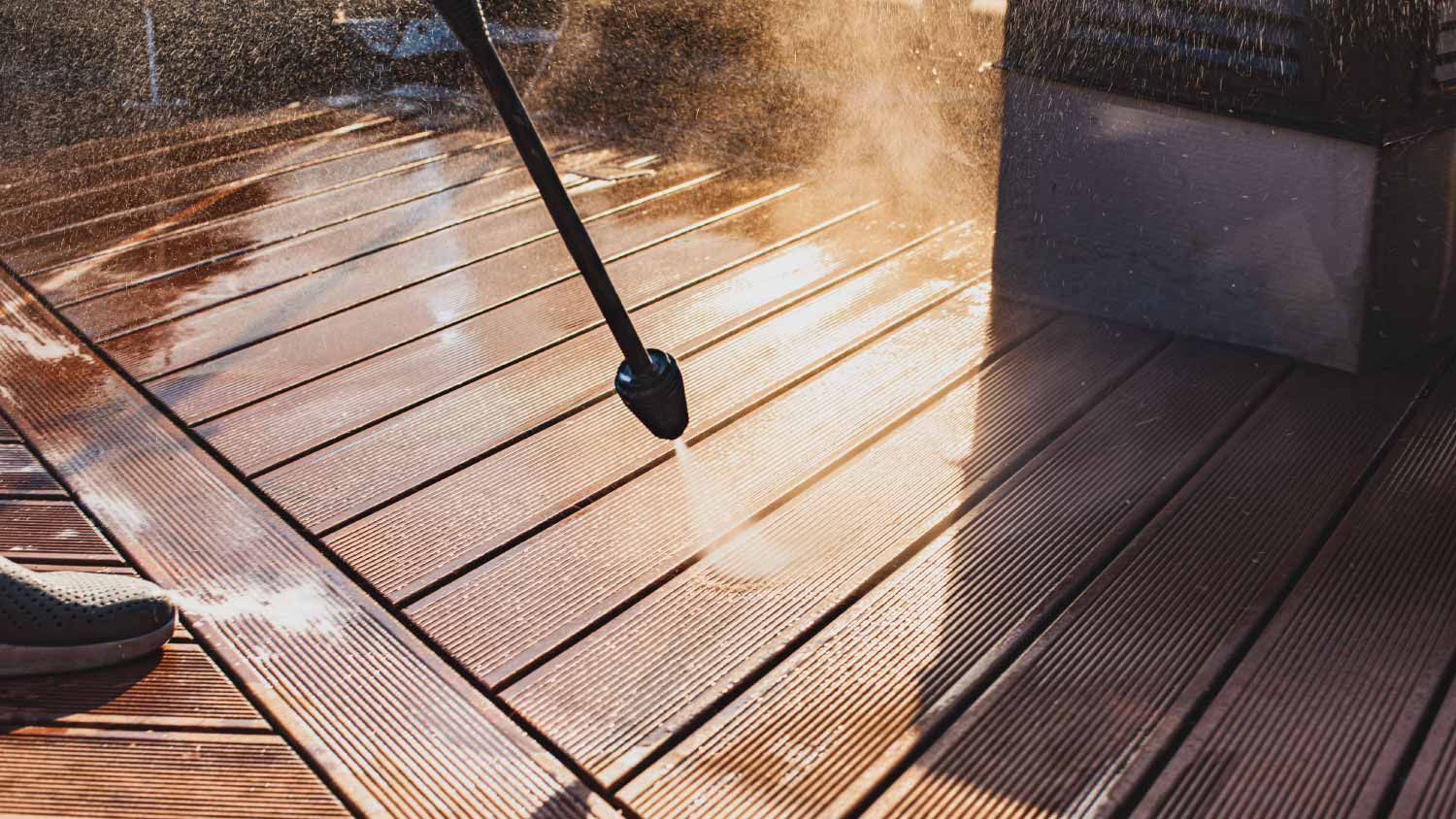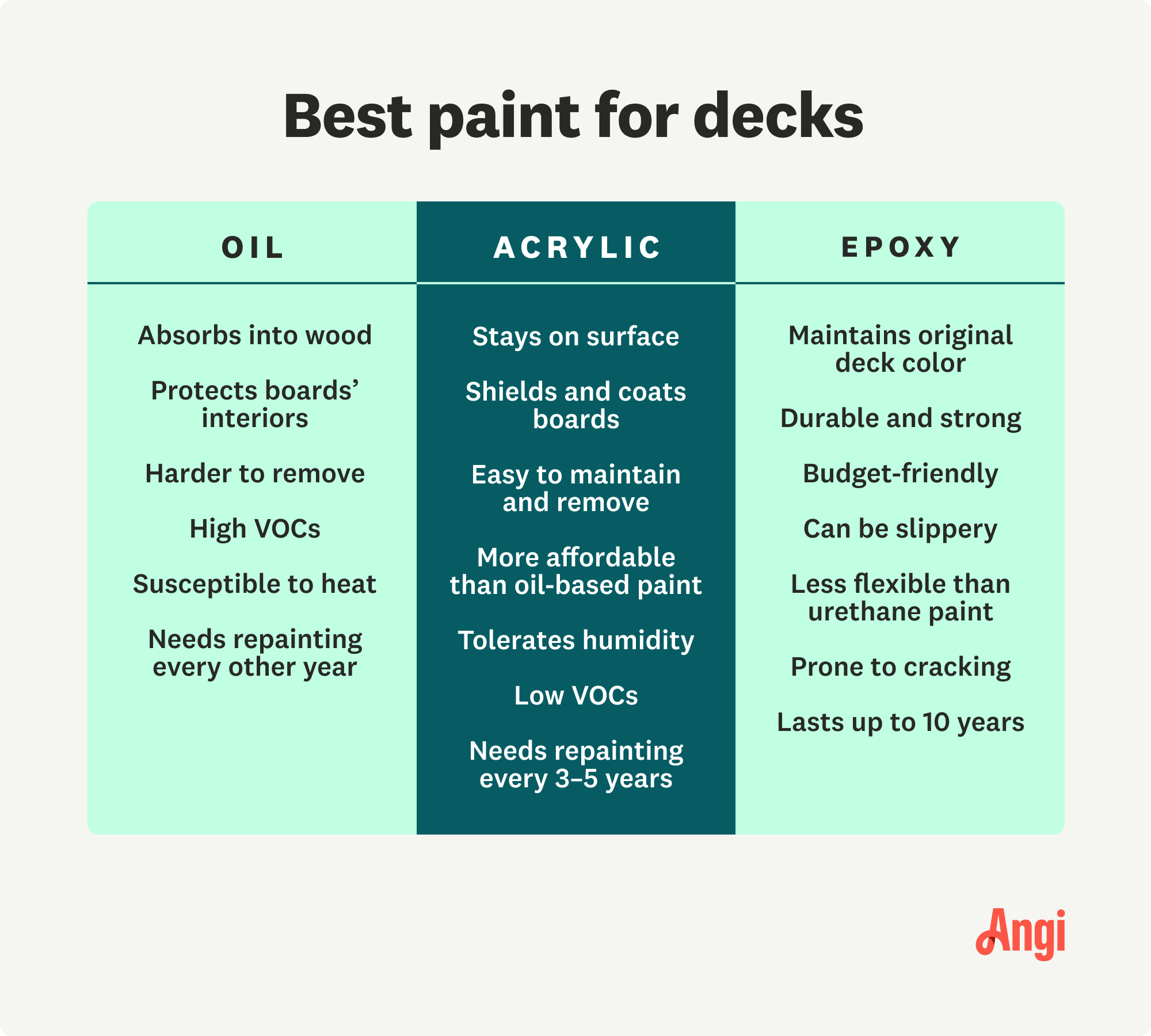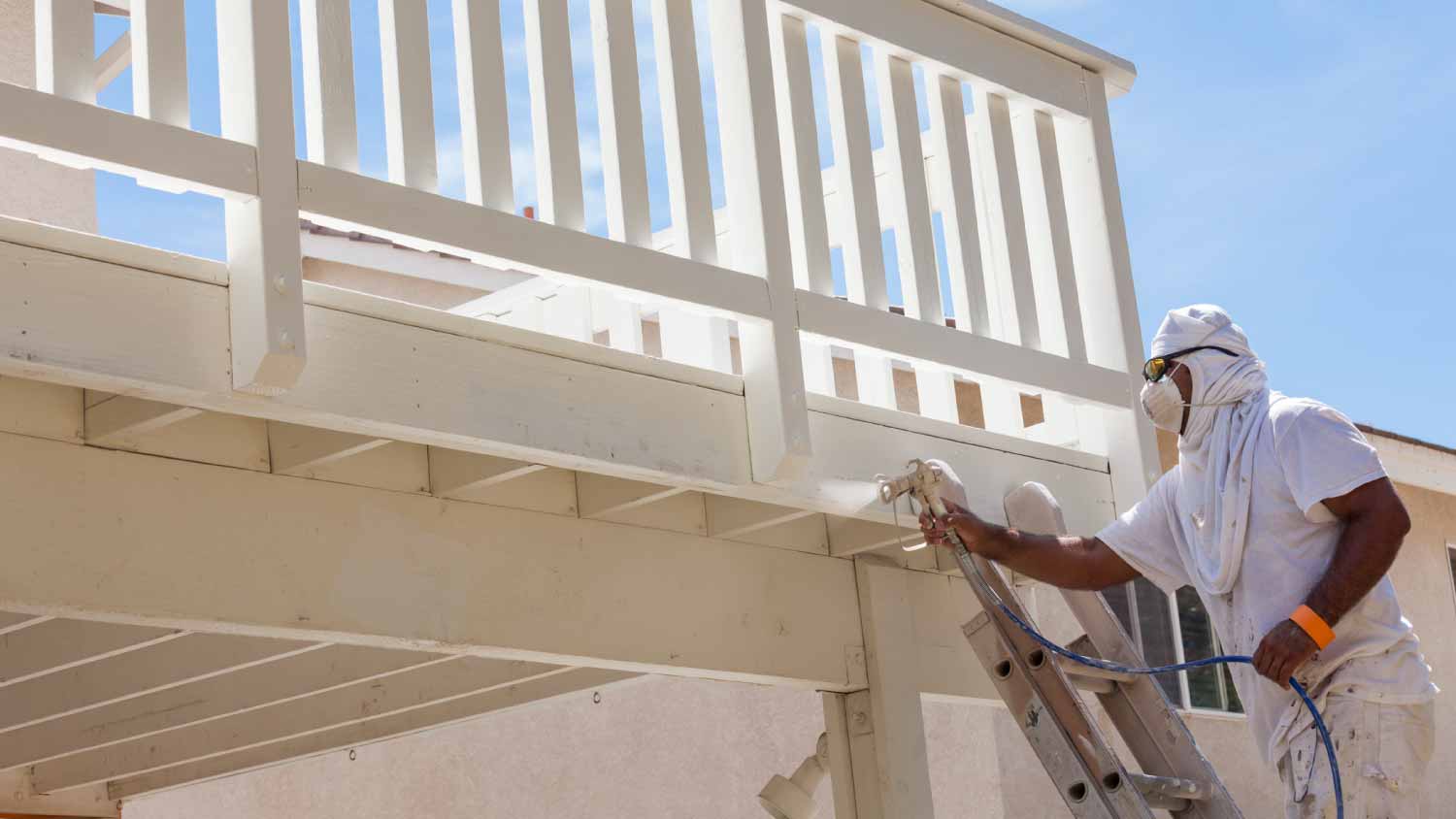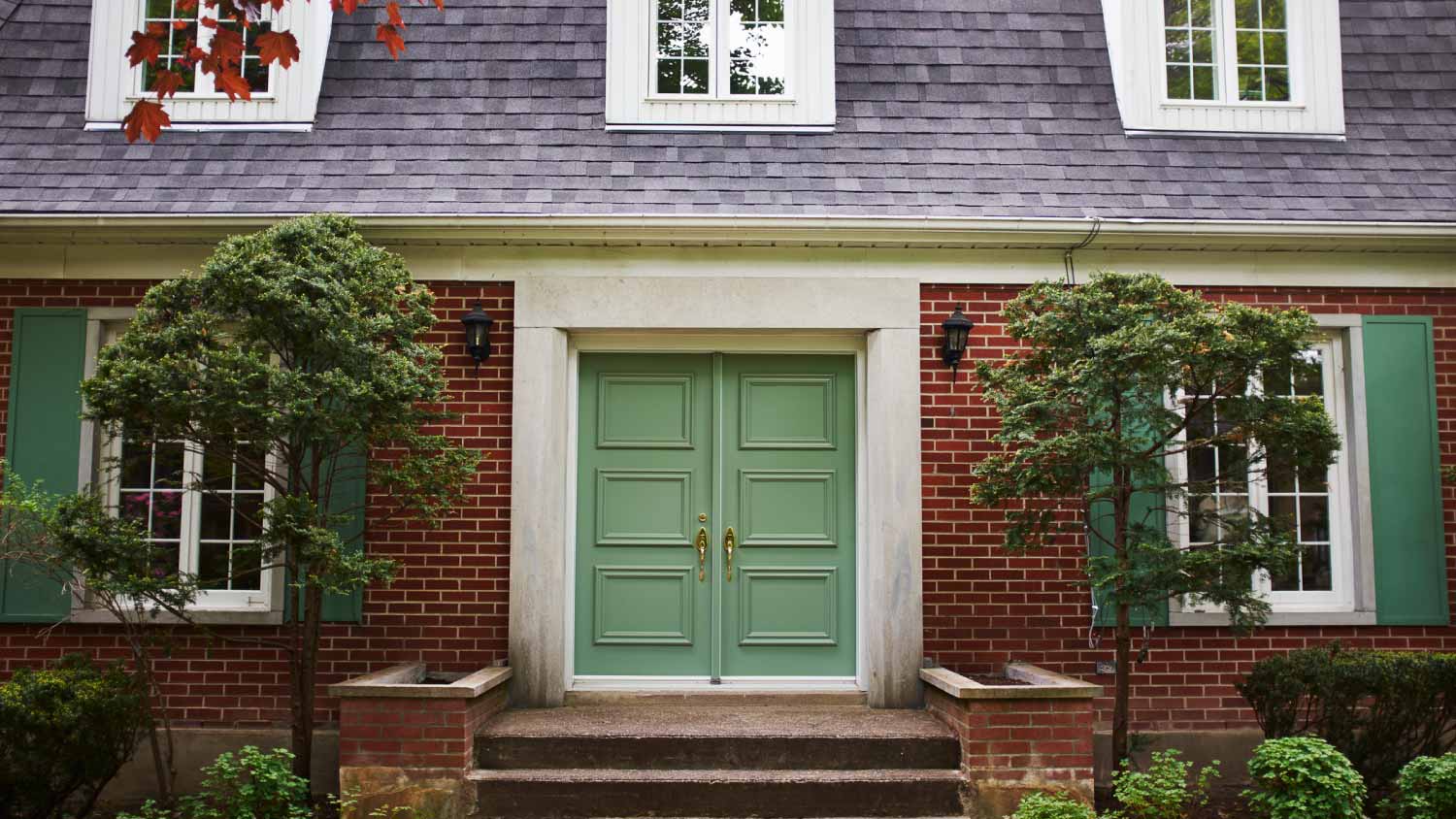
The cost to paint aluminum siding depends on several factors, including type of paint and labor cost. What are the pros and cons of DIY or hiring a painter?
Make your neighbors jealous with the showstopper you deserve


Painting a deck costs between $2 and $5 per square foot on average, but hiring a pro ensures the project will get done safely and efficiently.
Pros know how to select the right exterior paint for your climate, keeping your deck protected and looking its best.
This project requires attention to detail, but a pro handles prep work like taping corners for a flawless finish.
Pro deck painters will take care of labor-intensive tasks such as power washing and stripping old paint, saving you time and effort.
Hiring a pro reduces the risk of falls on ladders or uneven surfaces and exposure to harmful paint fumes, thanks to professional training and equipment.
Ah, nothing adds value to a home like a beautiful and functional outdoor space that you can enjoy seasonally or even year-round. Painting a deck is a rewarding home project that makes a space feel fresher and more appealing while protecting against the elements. Let's make your outdoor living area shine again by exploring how to paint a deck.

Painting a deck can be a rewarding DIY project but requires careful preparation and execution to ensure a durable and appealing finish. Here are the steps to paint a deck.
Gathering the necessary tools and supplies, including paint or stain, brushes, rollers, drop cloths, and safety gear, is a crucial first step in preparing to paint a deck. You will need:
Deck paint
Paintbrushes, rollers, or a paint sprayer
Paint tray and liners
Drop cloths or plastic sheeting
Painter's tape
Sandpaper or a deck sander
Deck cleaner or pressure washer
Safety gear (gloves, goggles, mask, and appropriate clothing)
Tip: After cleaning, use painter's tape to mask off areas like railings or exterior walls to prevent accidental paint splatter. Cover nearby plants, siding, and surfaces you don't want to paint with drop cloths or plastic sheeting.

This is an essential part of the DIY process that ensures high-quality results. Clear the deck of all furniture, plants, and obstacles. Sweep the deck to remove dirt and debris, and inspect the deck for loose boards, protruding nails, or any damage. Make necessary repairs before you move forward.
Sand the deck's surface to remove rough spots or old peeling paint, then clean the deck thoroughly with a cleaner, following the manufacturer's instructions. Rinse well.
If you have not cleaned your deck in some time, using a pressure washer on a low setting will speed up the process and give you a fresh canvas to work with. Most pressure washers do not require an additional cleaning agent. Let it dry completely—this may take a few days, depending on your climate.
You may or may not need to apply a primer before your first coat of paint. Use a high-quality primer before applying paint to a new, untreated wood deck. A primer helps seal the wood, provides better adhesion for the paint, and can enhance the overall durability and longevity of the finish.
However, if your deck is already painted and is in good condition, you may not need a primer, especially if you're applying a new coat of the same type of paint. In such cases, thorough cleaning, sanding, and proper surface preparation may suffice. Remember, checking the product recommendations on the paint you plan to use is crucial for obtaining the best results.

When applying paint to a deck, you have various tools at your disposal, each with its own advantages. Brushes offer precision and control for detailing, rollers cover large areas quickly, and sprayers provide a smooth finish. Combining these tools can be the best approach, using brushes for edges and intricate work, rollers for most of the surface, and a sprayer for a final, even coat. The choice is yours.
Start painting from the furthest point away from your exit so you don't walk on freshly painted areas.
Use a paintbrush, roller, or paint sprayer, depending on your preference and the deck's size.
Apply the paint evenly, following the wood grain if applicable.
Pay extra attention to sections that endure more wear and tear.
Apply a second coat if the product instructions recommend—ensure the first coat is completely dry before applying the second.
Allow the paint to cure according to the manufacturer's instructions—it typically takes 24 to 48 hours, depending on weather conditions.
After all the work you put into painting your deck, retaining its long-lasting beauty is top of mind. Start by regularly cleaning the deck and removing dirt, debris, and leaves that can build up and damage the finish. Sweep the surface and clean it with a mild detergent and water solution. Avoid using a pressure washer on a high setting because it may damage the paint.
Additionally, regularly inspect the deck for any loose boards, peeling paint, or signs of wear and address any issues promptly. Touch up any areas with chipped or flaking paint to prevent further deterioration.

There are several compelling reasons for painting a deck. First and foremost, it provides a protective barrier against harsh elements, preventing moisture, UV rays, and rot from damaging the deck’s surface.
Additionally, a fresh coat of paint can revitalize the deck's appearance, adding yard appeal and increasing the overall value of your home. It also allows you to customize the deck's color to suit your aesthetic preferences.
Furthermore, by sealing cracks and imperfections, painting can enhance safety, preventing splinters and making the surface more comfortable for walking. Ultimately, painting your deck is an investment in its longevity and the enjoyment of your outdoor space. Keep in mind, some types of decking materials don’t require paint, like Trex decking.
Enlisting the services of a professional to paint your deck can cost from $500 to $2,000. To many homeowners, it is worth the cost compared to staining, which typically costs less, $550 to $1,250. Staining is a more frequent maintenance task, requiring reapplication every two or three years to maintain the deck's appearance and protection. Conversely, deck paint can endure for up to a decade, offering extended protection against the elements.
Regarding DIY, you can save money if you have the necessary tools and equipment. A gallon of paint, priced from $20 to $80, suffices for an average 300-square-foot floating deck. Add $20 to $50 for a primer if required. Essential items like brushes, sprayers, and drop cloths can add around $50 to your out-of-pocket cost.
Deck painting is absolutely possible to DIY as long as you have the time and don’t mind the labor. That said, you’ll likely see a better result if you leave it to your local deck painters—they’ve got the experience and tools to deliver a quality paint job that’ll look great and last a long time.
From average costs to expert advice, get all the answers you need to get your job done.

The cost to paint aluminum siding depends on several factors, including type of paint and labor cost. What are the pros and cons of DIY or hiring a painter?

The cost to paint a pool deck depends on the dimensions and material, the type of paint, and whether you DIY. Read on to help determine a project budget.

The cost to stain a deck varies depending on its size, location, and type of stain. Keep reading to learn more about how much you might spend.

Knowing how to pick a front door color will help you achieve the style you desire and boost your curb appeal.
Painting or staining wood surfaces can give your home an entirely different look. If you aren’t sure which way to go, use this guide to decide which one is best for your next project.

What’s the difference between interior and exterior paint? Knowing how they vary is key to understanding why you should never substitute one for the other.